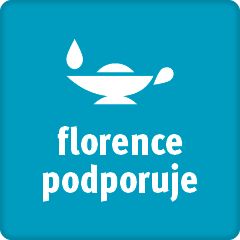


Číslo 6 / 2022
Why individuals choose balneotherapy and benefit from this kind of treatment
Balneotherapy is a method of treatment in which natural elements such as minerals and thermal waters, peloids and gases are used by means of bathing, drinking or inhalation. Spa therapy at thermal springs encompasses complementary and alternative methods that include balneotherapy, hydrotherapy, exercise, and massage. Although spa therapy has been a nonpharmacological treatment modality very commonly used in the past, especially in Europe and the Middle East, its place in modern medicine is still not clear.
Spa therapy and balneotherapy provides individuals with the opportunity to experience a change of pace and to retreat from the physical and emotional stress of daily life, opening a path for recreation and rest. It is believed that these treatments create a therapeutic atmosphere and exert a placebo effect. This plays an important role in reducing pain and developing a general feeling of wellbeing. It is recommended that this type of therapy is conducted under a doctor’s supervision and that the program of treatment is designed to be patient-specific.
The maximum therapeutic effect that can be derived from hot or cold applications is 20–30 min and Rebound Phenomenon may develop when this period is exceeded. Nurses are on duty at spa centers, serving as members of the health team. In order for hot and cold treatments to be safely implemented, it is expected that nurses be aware of how the body reacts to changes in temperature and what risks these therapies pose. The nurse needs to evaluate the patient’s tolerance to the application beforehand and assess the patient’s skin integrity. Additionally, the area to be treated should be evaluated in terms of any bleeding or circulatory disorder and the patient should be informed about possible side effects.
Balneotherapy and other spa treatments are frequently chosen by patients with complaints related especially to the musculoskeletal system. It is reported in studies conducted on spa treatments that significant improvements are experienced in some musculoskeletal conditions such as osteoarthritis, fibromyalgia, chronic low back pain, ankylosing spondylitis and rheumatoid arthritis. Evidence-based clinical practice guides recommend spa therapy especially in the treatment of osteoarthritis of the knee. Osteoarthritis of the knee is frequently seen in individuals over the age of 50, causing pain, function loss and a reduction in quality of life. A review of the literature on patients with knee osteoarthritis reveals that clinical improvement is observed in association with spa treatment for 3–6 months and sometimes for up to 9 months. In other studies conducted with patients with osteoarthritis, it has been found that patients have a good tolerance for spa treatment, that they experience a diminishing of pain intensity and a reduced need for taking pain killers after spa treatment, and that their functions and quality of life show improvement.
Source: BAYSAL E., LEBLEBICIOĞLU H., KHORSHIDB L. et al. Why individuals choose balneotherapy and benefit from this kind of treatment. Science Direct 2018; 32: 157–162. doi: 10.1016/j.ctcp.2018.06.010.
Slovníček
peloids – peloidy (sedimenty používané v lékařství – rašeliny, slatiny a bahna)
spring – pramen
to encompass – zahrnovat, pokrývat, obsahovat; obklopit, obehnat
pace – tempo, rychlost; krok, chůze
to retreat – utéct; stáhnout se, odejít, vzdálit se; ustoupit
path – cesta, stezka, pěšina; dráha
to exert – vyvíjet, vyvinout; využít, uplatnit; namáhat se, snažit se, přemáhat se
wellbeing – pocit pohody, pohoda, blahobyt
Rebound Phenomenon – rebound fenomén, který spočívá v návratu symptomů po vysazení léčby
to pose – představovat, znamenat; být; vznést, položit
beforehand – předem, dopředu, předtím
loss – ztráta, úbytek
diminishing – snížení, úbytek, zeslábnutí
pain killer – analgetikum, lék proti bolesti
Další články v tomto čísle
- Když se pere duše s tělem
- Životní jubileum PhDr. Hildy Vorlíčkové, DBA (*18. 8. 1942)
- Projekt PREVENCE II řeší nadlimitní dlouhodobou psychickou a fyzickou zátěž zdravotníků
- Válečný chirurg prof. Jan Levit nepatří smrti ani zapomnění – připomínka transportů do Terezína v roce 1942
- Kulatý stůl na téma prevence, sledování a léčby dekubitů v České republice
- Editorial
- Care Comm s. r. o. – těžké chvíle nás nejvíce posouvají
- Lázně v České republice se těší celosvětovému věhlasu a vysokému kreditu
- Integrativní přístup jako nutná inovace lázeňské léčby
- Úloha lázeňské péče v prevenci duševního zdraví











